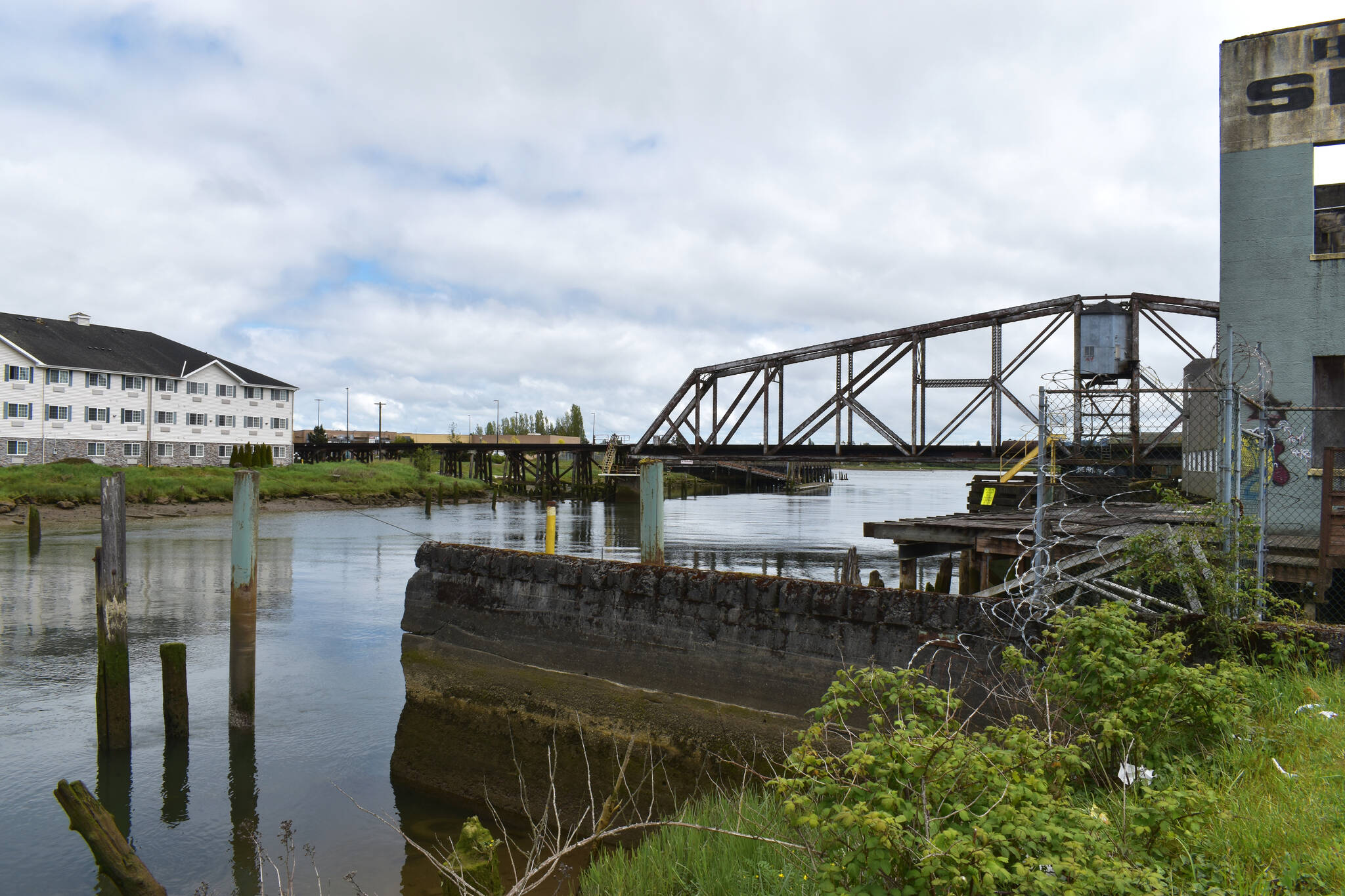Hoquiam is living up to its self-proclaimed status as the “Friendliest City” by picking up the tab for neighboring Aberdeen.
The Hoquiam City Council voted on Monday, May 25, to cover the final design and permitting for the North Shore Levee, one of the two critical levees of the Aberdeen-Hoquiam Flood Protection Project. The North Shore Levee will protect Aberdeen and some of eastern Hoquiam, whereas the North Shore Levee – West Segment will only protect Hoquiam.
The levees, located along the Wishkah and Hoquiam rivers, will protect against coastal flooding and bring more than 3,100 properties out of a Federal Emergency Management Agency drawn flood plain. Being in a flood plain forces property owners to abide by National Flood Insurance Program building codes and flood insurance regulations, which currently cost Aberdeen and Hoquiam residents more than $2 million in flood insurance a year.
“We have felt for some time that the North Shore Levee is an absolutely critical need for our community, and it will save all the people paying high flood insurance rates, which are very expensive, as well as prevent damage of their houses and properties,” said Hoquiam City Councilmember Jim George in a phone call with The Daily World. “This is the next big step in a long project, and it’s something that everyone on council sees as incredibly important for the future of both Hoquiam and Aberdeen.
According to Hoquiam City Administrator Brian Shay, the city expects to pay for some of final design of both levees using nearly $10 million in federal funding they received in March.
The funding comes after Derek Kilmer (D-Gig Harbor), representative for Washington’s 6th Congressional District, submitted a capital budget request to the House Appropriations Committee. The request was approved, and $9,950,000 in federal funding supporting the flood protection project was included in the $1.5 trillion omnibus spending package signed into law by President Biden on March 15.
“That grant is going to Hoquiam because we’re the agency that submitted that grant, so it makes sense for the consultant to come to Hoquiam,” said Shay. “It was and will still be joint decisions by the two cities.”
That consultant is HDR, Inc., an engineering company based out of Omaha, Nebraska. HDR was already working with the city of Hoquiam on the final design of the North Shore Levee – West Segment, which is 35-40 percent done according to Shay. The firm will now take over the final design of the North Shore Levee as well, replacing KPFF Consulting Engineers.
KPFF has been responsible for the preliminary engineering and FEMA permits of the North Shore Levee, but HDR has already been a consultant on the project for over a year.
The city of Hoquiam will now be the contractual agency to pay HDR for the final design of the North Shore Levee, which is expected to cost over $8.4 million according to the “scope and fee” authorized by the city council on Monday. The agreement also includes over $8.2 million in additional contract options for later stages of the project. According to Shay, the city will amend its agreement with HDR when it is time for those tasks.
While this round of work on the flood protection project will be supported by the federal funding Kilmer secured, Shay believes additional grants are forthcoming.
“We expect to get the $34.65 million BRIC (Building Resilient Infrastructure and Communities) grant. We’re not formally under a grant agreement yet, it’s been selected for further review,” he said.
BRIC grants are key to shaving off costs for both cities. The estimated cost of the entire Aberdeen-Hoquiam Flood Protection Project is $120 million, but both cities combined have applied for approximately $84 million in BRIC grants.
The city of Hoquiam is waiting for funds to be formally obligated for their BRIC grant application, and is working diligently with FEMA to meet the standards needed to obtain the funds.
Other parts of the flood protection project are moving forward in Aberdeen, where work on the Fry Creek Pump Station has gone out to bid. The pump station is a crucial component of coastal flood protection and storm drainage in both cities.
In order for the levees to be certified by FEMA, the stormwater system has to be able to handle a 25-year flood event. The replacement pump station will be capable of pumping a 100-year, 24-hour flood event during high tide.
The Fry Creek Pump Station project is estimated to cost about $16 million. According to a presentation by HDR at Monday’s meeting, 35 percent of the design package was completed in March, with 65 percent scheduled for Decemeber.
According to Shay, the next step in environmental review is to host a FEMA scoping meeting. The meeting will include staff from FEMA, the city, and HDR. It is scheduled for June 22 and will be open to the public.



